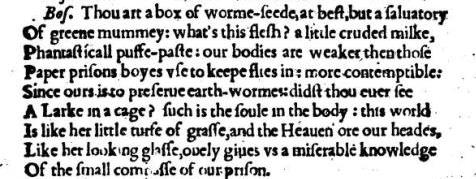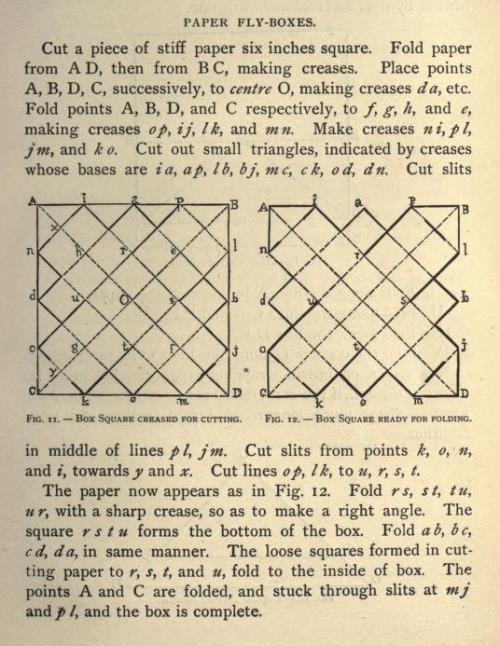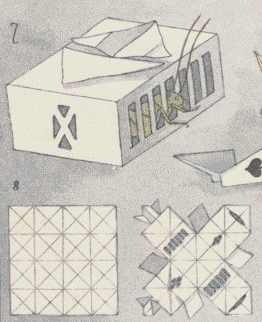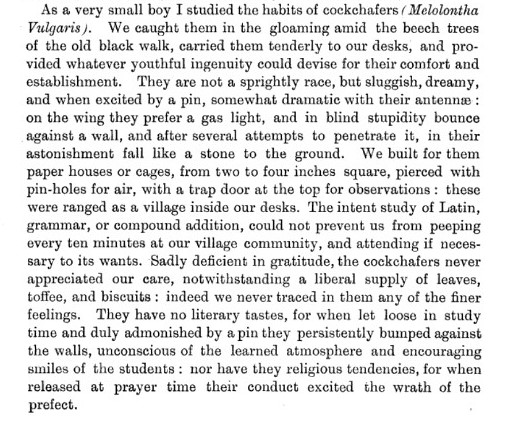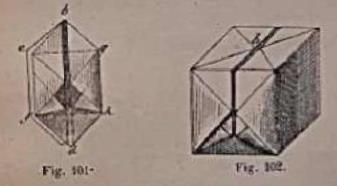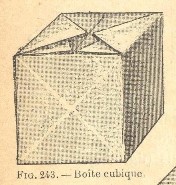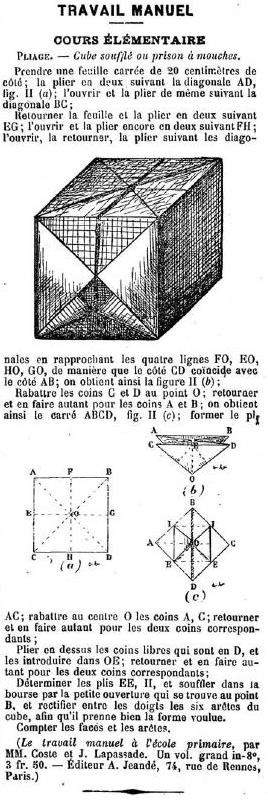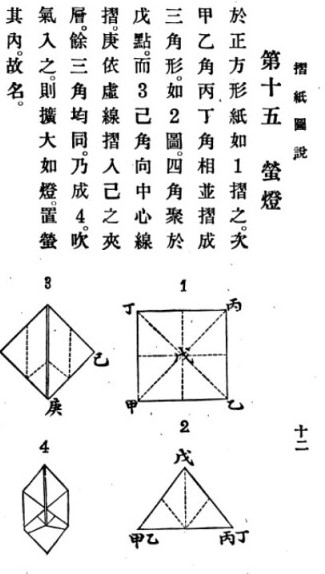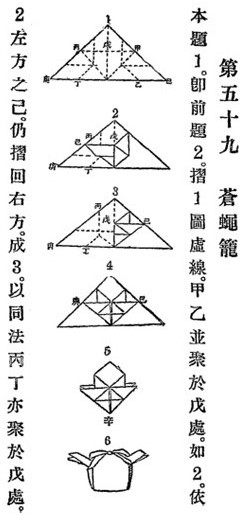| The Public Paperfolding History Project
Last updated 30/1/2024 x |
|||||||
| Paper Prisons for Insects | |||||||
This page is being used to collect information about the use of folded paper containers as Paper Prisons for Insects. Please contact me if you know any of this information is incorrect or if you have any other information that should be added. Thank you. Information about using paper cones or pyramids to trap insects on a tabletop can be found in the page Designs which Move under Insect Power. ********** Introduction In that part of his series 'A.B.C of Origami' published in 'British Origami' magazine no 185 of December 1980, Eric Kenneway included the following item:
The words do indeed appear in the original text (see entry for 1623 below) but they are not the 'first known reference to paperfolding in the English language'. There is no evidence to suggest that these 'paper prisons' were waterbombs, and none to suggest that they were not. The reference in the 'Origamian' reads:
********** Chronology c1523 There is a passage in a story in the book 'Hua ying ji' (or 'Flower Album'), a collection of short stories written by Tao Fu (1441~1523), which reads 'so use thin paper fold a square (or a cube) as bird cage shape catch a tick, a mosquito, a fly, a lice, a flea, put in cage inside put on table above ... occasionally see paper cage it's inside as if there's objects move take and reflect sun observe it so five insects in it' (Information from, and translation by, Xiaoxian Huang). ********** 1623 The play ‘The Tragedy of the Dutchesse of Malfy', which was first published in London in 1623, contains a speech referring to 'those Paper prisons boys use to keepe flies in'.
********** 1658 'The Mysteries of Love and Eloquence' by Edward Phillips, which was printed for N Brooks at the Angel in London in 1658, contains a passage which reads 'What are out Bodies? A little curded milk, fantastical puff-past, like paper prisons they use for to keep flies in.'
********* 1669 There is a reference to a 'Paper-prison' (but not to insects) in 'An Elegant and Learned Discourse of the Light of Nature' by Nathanael Culverwel, which was published by Tho Williams in Oxford in 1669.
********** 1670 'Republica Literaria' by D Diego de Saabedra was published in Alcala, Spain in 1670. It contains mention of 'jaulas de grillos' (cricket cages) but does not say what these cages were made of or even if they contained crickets at the time. However, an English translation 'The Commonwealth of Learning' (see below), published in 1705, translated this as 'little cages with crickets in them'.
********** 1761 'The London Chronicle' for 1671 contains a report of a Voyage to Stade dated 6th Aigust 1671 which includes a description of a boy selling grasshoppers to the inhabitants of Hamburg in 'little paper cages like doll's houses'.
********** 1762 'Philotheus' was published by B Dod in London in 1762. The work is anonymous but believed to be by Edward Yardley. It contains mention of 'cages for flies'. The material these cages are to be made from is not stated.
********** 1789 'The Natural History of Selbourne' by Gilbert White, which was published for E White and Son in London in 1789, contains reference to the keeping of crickets in a paper cage.
********** 1820 Thomas Hood's poem 'Address to the Social Literary Society, July 1820' includes mention of 'grasshoppers that sung from paper cages'.
********** 1832 'Le Colonel Chabert' by Honore Balzac was first published in 1832. It contains mention of 'hannetons enfermes par les ecoliers dans les cornets de papier' which translates as 'cockchafers locked up by schoolchildren in paper cones'.
********** 1835 'Sketches of Corfu' was published anonymously by Smith, Elder and Co in London in 1835, but the author is believed to be Frances Maclellan. It contains a passage about keeping fireflies in paper cages.
********** 1863 'Moral Culture of Infancy and Kindergarten Guide' by Mrs Horace Mann (Mary Tyler Peabody) and Elizabeth P Peabody, which was published by T O H P Burnham in Boston in 1863, contains a paragraph about Folds of Life which mentions 'fly-boxes' but does not otherwise indicate which design is being referred to.
********** 1866 'The Handbook of Engraved Gems' by C W King, which was published by Bell and Daldy in London in 1866, contains mention of crickets kept in paper cages by children in Italy.
********** 1868 The January 1868 issue of 'Student and Schoolmate' contains an article titled 'Crickets' which mentions that 'Spaniards' keep them in paper cages'.
********** 1883 'The American Girls's Home Book of Work and Play' by Helen Campbell, which was published by G P Putnam's Sons in 1883, explains the Catherine of Cleves Box under the heading of 'Paper Fly Boxes', although no further information about this description is given.
.********** 1884 'Jeux et Jouet du Jeune Age' by Gaston Tissandier, which was published by G Masson in Paris in 1884 illustrates a version of the Catherine of Cleves Box in which slits have been cut in the side of the box so that it can be used as a cage for a cricket.
********** 1889 Volume 8, Issue 3, of the 'Downside Review' for November 1889 contained a section which describes keeping cock-chafers inside 'paper houses or cages, from two to four inches square ... with a trap door at the top for observations' which, it seems to me, is a good description of the waterbomb.
********** 1892 The Waterbomb appears as 'Cube ou prison a mouches' (prison for flies) in 'Le Travail Manuel a L'ecole Primaire' by Jully & Rocheron, which was published by Librairie Classique Eugene Belin in Paris in 1892. As far as I know this is the earliest indisputable evidence of a Waterbomb being called a prison for flies.
(Note that the flaps are not fully inserted into the pockets in this version) ********** 1893 The Waterbomb appears as 'Boite Cubique ou Prison a Mouches' (Cubic Box or Prison for Flies) in 'L'Annee Preparatoire de Travail Manuel' by M P Martin, which was published by Armand Collin & Cie in Paris in 1893.
********** The Waterbomb appears as 'Cube souffle ou prison a mouches' (Blast cube or prison for flies) in the 9th April 1983 issue of 'Journal des Instituteurs'. This is extracted from the book 'Le Travail Manuel a L'ecole Primaire, by M. Coste et J. Lapassade, which had been published in 1887.
********** 1914 Diagrams for a 'Firefly Box' appear in 'Zhe zhi tu shuo' (Illustrated Paperfolding), compiled by Gui Shaolie, which was published by the Commercial Press in Shanghai in Ming guo 3 (1914).
********** 1917 The Kettle appears under the title 'Fly Cage' in 'Xu Zhe zhi tu shuo' (More Illustrated Paperfolding) by Yongxiang Shi, which was published by the Commercial Press in Shanghai in 1917. The directions comment that 'it is difficult for the fly to fly away'.
********** |
|||||||


